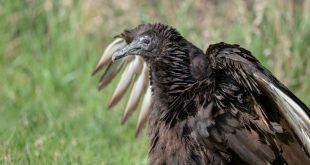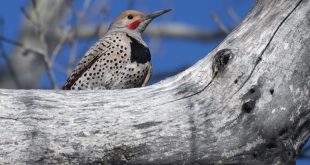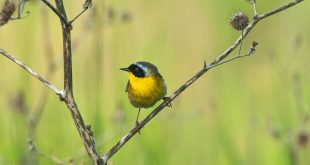On Thursday morning, while taking some personal time (to go birding, of course), I stumbled across an unexpected situation. The photo essentially captures what I observed.
This poor Great Blue Heron was out in the deep, about 30 feet from shore, looking more like a loon from the distance I initially spotted the bird. As most people know, Great Blue Herons are birds of the shoreline, not open water. I watched this bird for about an hour to figure out why it was in this unusual location. Initially, I thought it may have been tangled in some discarded fishing line. However, after seeing the bird flail around on a few instances, I saw nothing to suggest this was the case. My current working hypothesis is more natural and more interesting. Let’s rewind a few years.
Back in about I don’t know when, I came across an American Coot flailing around on the water as though it was tethered to something. Again, I thought it must be entangled in something anthropogenic, discarded fishing line or something of the like. Being a kind soul, I put on my boots and waded out to free the bird. As I got close to the bird, I poked around with my boot under water to see what had the bird. At one point, I stepped on something firm and when I made contact, the coot was instantly freed. What had the coot was a snapping turtle.
Fast forward to today. The best explanation I have for what I observed today regarding this Great Blue Heron is that a very large snapping turtle got ahold of one of its feet and wasn’t letting go. But as the headline states, alternative hypotheses accepted.
One final word of caution. Occasionally people may stumble across an injured heron and they may be inclined to help the poor bird. Injured herons will see you as a threat and will protect themselves. Herons have been known to go after peoples faces and eyes with their sharp bills and they have incredible reaction times. Thus, extreme caution should be used when approaching injured herons or similar birds with long sharp bills (you know this if you have ever watched a heron catch prey). It may be best to leave well enough alone, even though it might be difficult.
 Nebraskaland Magazine
Nebraskaland Magazine




